At BioLegend, one way that we address reproducibility in research is through antibody validation. We guarantee antibody specificity of all of our antibody products. As knocking down or knocking out a protein is one of the most trusted ways to validate antibody specificity, we are beginning to validate many of our cell biology antibodies using knockdown or knockout models.
For this, we are testing our antibodies in Western Blot applications using in-house developed CRISPR/Cas9-mediated gene knockout/knockdown or siRNA-mediated knockdown. In addition, we are collaborating with EdiGene Inc. (a genome editing company) to provide additional CRISPR/Cas9 knockout cell lysates for testing. The data from these validation experiments will be made readily available to researchers.
To learn more about our cell biology portfolio, visit our Cell Biology webpage.
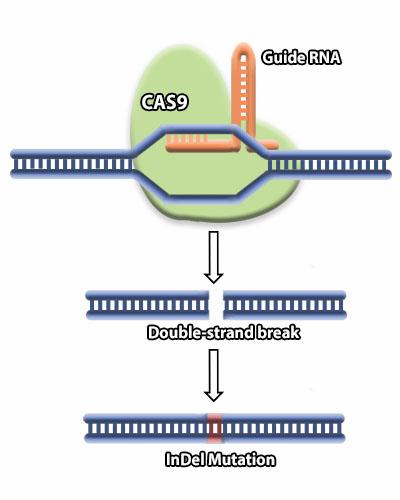
CRISPR/Cas9 technology can be used to knock out gene expression by delivering both a guide RNA and the CAS9 endonuclease into the cells of interest. The guide RNA is designed to direct the CAS9 protein to a particular place in the genome where it creates a double-strand break. The double stranded break can be repaired in two ways: non-homologous end-joining (NHEJ) or homologous directed repair (HDR). NHEJ is the most common form of repair and as it is error prone, it allows for loss-of-function, insertion, and deletion mutations which might result in frameshifts and reduced protein expression. In addition to knockout mutations, a template DNA can be included to direct HDR and create specific mutations in the gene-of-interest.
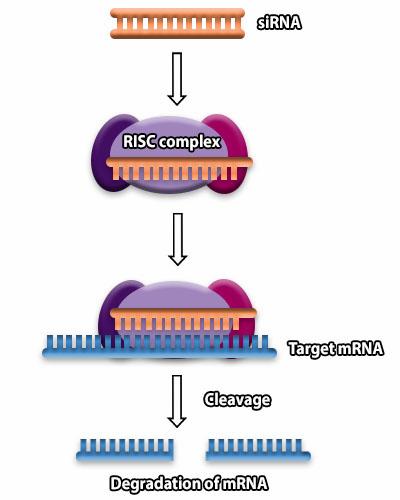
Small interfering RNAs (siRNA) utilize RNA-interference pathways to knock down gene expression. Double-stranded siRNA is introduced into the cell and incorporated into the RISC complex. Once in the RISC complex, the siRNA is unwound and one strand is degraded resulting in a single-stranded siRNA. The single-stranded siRNA binds to the target RNA where the Argonaute proteins in the RISC complex cleave the target mRNA. Cleaved mRNA is further degraded thereby preventing the cell from translating the mRNA resulting in gene knockdown.
Purified anti-TSC2 (clone W16104A)
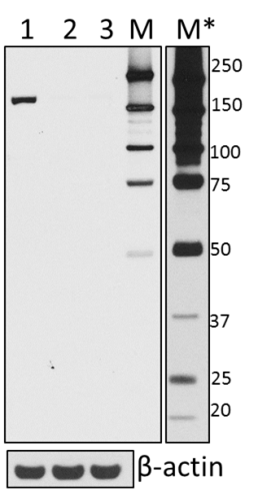
Total lysates from HeLa (Lane 1), 5nM (Lane 2), and 20nM (Lane 3) TSC2 siRNA treated HeLa cells were probed with purified anti-TSC2 antibody (clone W16104A, Cat. No. 697701). Direct-Blot™ HRP anti-β-actin Antibody (clone 2F1-1, Cat. No. 643807) was used as a loading control. M is MW ladder. M* is higher exposure of the ladder.
Purified anti-HDAC2 (clone 13G8C67)
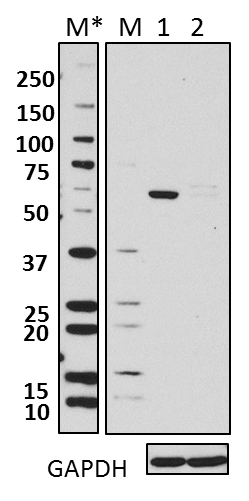
Total lysates from 293T (Lane 1) and 293T/HDAC2 CRISPR/Cas9 treated cells (Lane 2) were probed with purified anti-HDAC2 antibody (clone 13G8C67, Cat. No. 680102). Anti-GAPDH (poly6314, Cat. No. 631401) antibody was used as a loading control. Lane M: MW ladder, M* indicates longer exposure.
Purified anti-AKT1 (clone O94E10)
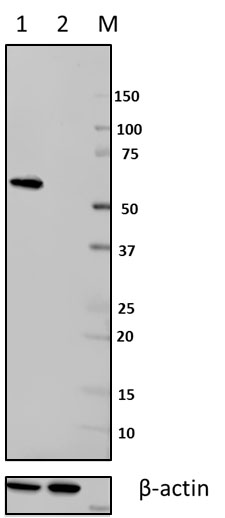
Total lysates from HeLa (Lane 1) and CRISPR/Cas9 treated HeLa cells (Lane 2) were probed with purified anti-AKT1 antibody (clone O94E10, Cat. No. 680302). Anti-GAPDH (poly6314, Cat. No. 631401) antibody was used as a loading control. Lane M: MW ladder.
 Login / Register
Login / Register 







Follow Us